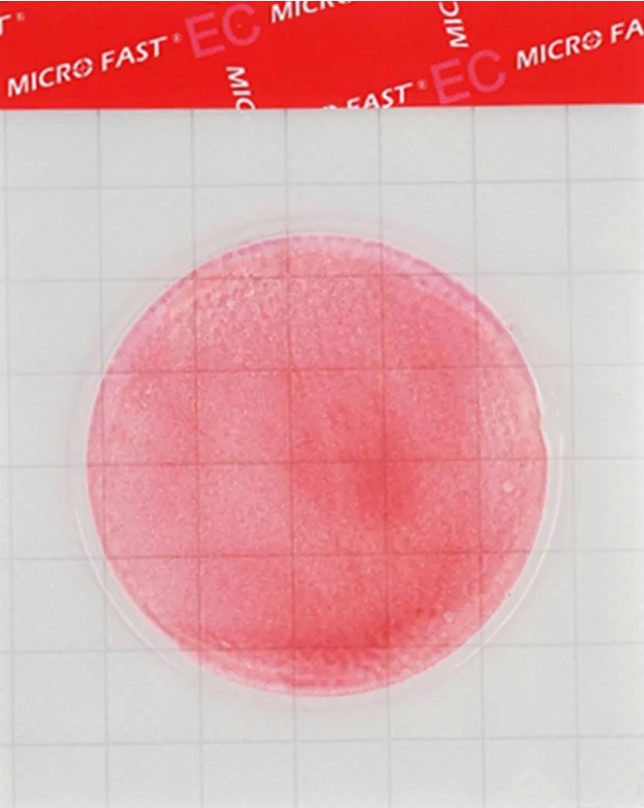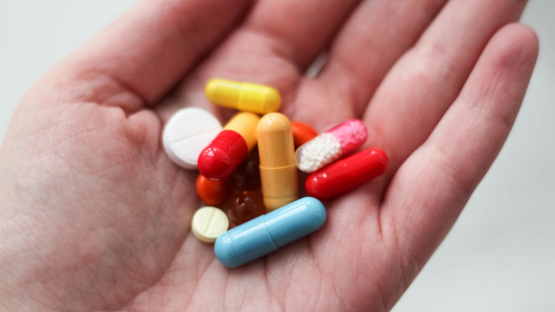Useful "eshki" - are there any? We understand the nuances of nutritional supplements together with an expert

Studying the topic and trying to find out where the legs grow from for the “yeshki”, we found on the Internet a whole code of rules with a strange, almost magical name Alimentarius - Codex Alimentarius. To the uninitiated, it sounds like a spell from Harry Potter or the name of a secret Masonic lodge.
As explained by the HEAD of the laboratory for studying the nutritional status of the population of the Scientific and Practical Center for Hygiene, Candidate of Medical Sciences Natalia Tsemborevich, the Codex Alimentarius is a set of international food standards, guidelines and instructions that regulate the safety and quality of food entering the world market and ensure compliance fair trade terms.
The Codex Alimentarius Commission has 188 members: 187 countries and one association, which represents the European Union. The Republic of Belarus has been a member of the Codex Alimentarius since 2006. The National Contact Center operates on the basis of the Scientific and Practical Center for Hygiene. Observer status in the Codex Alimentarius has 240 organizations: intergovernmental, non-governmental and UN bodies, etc.
The expert stressed that the standards of the Codex Alimentarius, unlike the technical regulations, are not mandatory and are recommended for voluntary use.
On the territory of the member states of the Eurasian Economic Union, there are uniform mandatory requirements and a single list of food additives allowed for use. This is provided for by the technical regulation of the Customs Union TR CU 029/2012 "Safety requirements for food additives, flavors and technological aids". On the territory of our country, there are also national regulatory documents approved by resolutions of the Council of Ministers and the Ministry of HEALTH. The requirements contained in these documents are harmonized with the international requirements established in the standards of the Codex Alimentarius.
What does this mass of very serious documents declare? The main thing is that the use of additives should not increase the degree of risk of a possible adverse effect on human health , mislead in relation to the consumer properties of food products, or cause deterioration of organoleptic indicators (consistency, color, taste, smell). Food additives can be used only in cases where it is necessary to improve technology, as well as to improve the consumer properties of products, increase shelf life, which cannot be achieved otherwise or is not economically justified.
Interestingly, since 2012, the list of permitted food additives has not changed.
Why "E"?By the way, they are not called "Eshki" by chance. The system of digital identification of additives was created in Europe in 1953. Hence the letter "E" - Europe. Words such as essbar (German) and edible (English) start with "E", which means "fit for food". True, the views on the suitability for food of many "E" have changed since then.
More than 1500 food additives are known. About 350 are approved by the Ministry of Health and used in our country. Preservatives and antioxidants can increase the shelf life; flavors, dyes, color stabilizers make the product more attractive to the consumer; emulsifiers and thickeners improve consistency. There are plenty of products with "shocks" on the shelves, wherever you look - sausages , MEAT and bakery products, pastries, cheeses , curds, yogurts, canned food and more. You will not find nutritional supplements, perhaps, only in baby food, MILK , fresh seasonal fruits and vegetables.
"Glutamate stimulates special taste receptors, thanks to them the body understands how much protein is in our food."One of the most odious food additives is monosodium glutamate (E621). Incredible, amazing rumors about her have been circulating for a long time. Thanks to this “yeshka”, we often overdo it with food: with special pleasure we finish a large pack of chips or pour ourselves a second bowl of soup at lunch. It's delicious!
And all because glutamate deceives our receptors. In addition to favorite dishes, he is able to make us enjoy eating even tasteless food. It is not glutamate itself that makes it conditionally harmful. It only makes it more attractive, adding bright taste sensations. By the way, black pepper, soy sauce, table SALT , SUGAR do the same with our receptors .
SPC for food controls the content of e-additives in foodIn the international system of classification "yeshek" flavor enhancers are assigned a separate class: additives from E600 to E699. But this does not mean that there are a whole hundred of them. There are only thirty in the classifier. A dozen additives are actually used on the strength. And monosodium glutamate, E621, is the king of all flavor enhancers. You can often hear the statement that we have long developed an addiction to it.
- It is quite possible, - says the head of the laboratory of nutrition and sports of the Institute of Physiology of the National Academy of Sciences of Belarus, candidate of biological sciences Tigran Melik-Kasumov. - After all, glutamate excites special taste receptors, thanks to them the body understands how much protein is in our food. Chemically speaking, glutamate is an amino acid and is one of the most common of the 20 that proteins are built from. Therefore, it is easier for the body to analyze the diet by glutamate. We get 10-25 grams of it per day due to the digestion of the protein eaten.
But when pure glutamate is added to the product, its taste becomes more pronounced. And this is the main insidiousness of this food additive, like any flavor enhancers: it provokes overeating. It does not cause direct harm to health. According to the scientist, from the point of view of physiology, it is difficult to imagine that adding a few grams of glutamate to food will somehow harm the body. But, notes Tigran Beglyarovich, along with flavor enhancers, the use of flavorings contributes to the masking of low-quality products and overeating. Therefore, if there are several such additives in the product, it is worth considering - why were they "introduced" there? Most often, so that they buy more of such goods, and the manufacturer invests less in them.
"The easiest way is to try monosodium glutamate in its pure form once."Having studied the biochemistry of monosodium glutamate, one can be convinced that it is difficult to find a more natural and natural substance for us. Absolutely in every protein that we consume with food, be it dairy, meat or fish products, vegetables, cereals or fruits , there is natural glutamate. They are rich in peas, corn, carrots and tomatoes . It is also found in fish and animal meat, dairy products and even breast milk.
Someone will object: one thing is natural glutamate, and quite another - artificially created, added to food. However, the glutamate contained in the tomato is absolutely no different from synthesized glutamate. Moreover, in the industrial version, this food supplement is now obtained not through chemical reactions, but through microbiological synthesis, where it is produced by bacteria.
And yet, from the point of view of physiology, it is better to give preference to natural or identical supplements, says Tigran Melik-Kasumov. For many of them, the human body has a ready-made "program" for processing. Artificial additives are absorbed by the body in non-specific, and therefore less effective ways.
Natalia KomarovaWhat is umami taste?But back to the main feature of glutamate - enhancing the sensation and aroma of any dish or product. It is known that a person physiologically recognizes five tastes: sweet, sour, bitter, salty and umami. Glutamate is able to enhance different, such as, for example, bitter and salty. But umami is the taste of monosodium glutamate. Tasters enthusiastically describe it as a kind of gastronomic sensation that occurs when eating mushrooms, chicken, cheese. In CHINA, Japan and other countries of the Far East, umami is considered a separate taste. Over time, the Europeans agreed with this.
How to learn to separate the taste of umami from all the rest?
- The easiest way is to try monosodium glutamate in its pure form once, - says Natalya Komarova, Deputy General DIRECTOR for Research and Standardization of the Scientific and Practical Center for Food of the National Academy of Sciences of Belarus. - If we talk about taste associations, then, in my opinion, these are like hard, very mature cheeses. They have the most distinctive umami taste, and many people really like it.
The NPC periodically conducts training courses specifically for taste testers. Most often they are employees of the laboratories of the center. People with high sensory sensitivity are suitable for such a difficult job. And glutamate for tasters is just the reference standard substance with umami flavor.
- We prepare special solutions of sucrose, salt, citric acid, as well as solutions of bitter taste, such as caffeine, and unique spicy umami based on monosodium glutamate. And so we test the testers. We find out, firstly, whether they can distinguish these tastes. Secondly, at what concentrations in the solution they will feel them. And only then tasters start testing new products. Recently, they drew up their conclusions on new confectionery and pasta products, - says Natalia Komarova.
Of course, in the new recipes "yeshki" are present. But it's not always monosodium glutamate. Although, according to technologists, there is a false belief that E621 has long bypassed food additives with experience, including vinegar (acetic acid - E260) and soda (sodium bicarbonate - E500 ii), which every housewife has at hand. But it's not. In Belarus, and not only, monosodium glutamate has been seriously squeezed in some products, which the consumer is proudly informed by the labels "Without monosodium glutamate". It would seem that here it happened: the throne of the king of flavor enhancers staggered. But it is hardly worth rushing to enjoy glutamate-free products. Production technologies often provide for alternative "yeski". As Natalya Tsemborevich noted, in addition to glutamic acid and its salts (E621-E625),
In general, you can’t even see the “eyes” under a magnifying glass - they disguised themselves. Another thing is important: that they do not harm the health of consumers.
Chemical Engineer of the Laboratory of Chromatological Research Victoria Goncharova analyzes a product sampleSix years ago, experts from the European Food Safety Authority (EFSA) questioned the safety of glutamic acid and its salts. Animal studies have confirmed: exceeding the allowable daily dose leads to adverse effects in humans, such as headache , high blood pressure and insulin levels. That is, these supplements cannot be considered absolutely safe, and the problem, as we see, is not only in overeating.
Candidate of Medical Sciences Natalya Tsemborevich emphasizes: the Scientific and Practical Center for Hygiene also conducted a study of the consumption of E620-E625 in the diet of various groups of the population of Belarus, it does not exceed the safe level established by EFSA. Thus, the reliability of the current hygienic standard in the country, which regulates the indicators of safety and harmlessness of food additives for humans, has been confirmed.
Allow or prohibit?It is noteworthy that each country or group of countries independently determines whether to use a particular food additive.
- The decision is made on the basis of experimental scientific data, - explains Natalya Tsemborevich. - For example, they ban if there is a proven negative effect on animals. It may be different. In animals, the additive did not cause negative effects, but there is insufficient evidence of its harm to humans. And on this basis, "yeshka" is banned.
In the EAEU , in particular, the dye red 2G (E128) cannot be used. The reason was data published in 2007 by the European Food Safety Authority that the additive is metabolized in the body to toxic aniline. However, studies confirming this have only been done in mice. Data on effects on humans are not available.
In the UK , the use of E128 is allowed. The amaranth dye, E123, banned in Belarus, is also allowed there. In our country and in many countries, food additives potassium bromate (E924a) and calcium bromate (E924b) are recognized as potentially harmful and banned. They partially destroy vitamins P1, PP and the amino acid methionine, can provoke the development of cancer and have a toxic effect on the kidneys. However, in the US , these additives are allowed. In many countries, the dye erythrosin, E129, which is banned in the EAEU, is used.
"It is important to evaluate the content of food additives in terms of naturalness."In fact, it is wrong to divide food additives into more or less harmful ones, Natalia Tsemborevich believes. All approved nutritional supplements are safe when used in the correct amounts.
Confectionery technologists of the NPC for food are in solidarity with our expert. "Eshki" - the safest component, they say. The code "E" is available - it means that the additive has passed the necessary safety studies, and there is no reason to suspect that it will harm the body. Like indiscriminately consider taste modifiers, thickeners, emulsifiers and other technologically important additives as harmful. There are undoubtedly more of them in the confectionery industry than anywhere else: in the production of sweet products, an attractive appearance, taste, aroma and the correct consistency of the product are especially important. And, say, in products for diabetics, an e-additive, the same xylitol or sorbitol as a sweetener, can generally be up to 70%. But does this make diabetic waffles or cookies unhealthy? A rhetorical question.
Margarita Alekseenko: domestic modified starch is no worse than importedSubstances are safe, but there are nuancesConfectioners also use natural flavors based on natural raw materials. Agar-agar is obtained from algae, APPLE pectin - from apples. In general, most nutritional supplements have natural counterparts. So, benzoic acid, known as a preservative, is found in cranberries, lingonberries, blueberries, honey and fermented milk products (yogurt, yogurt), and sorbic acid is found in red mountain ash.
“Such dyes and vitamins are completely safe,” explains Valentina Babodey, head of the department of technologies for the confectionery and fat-and-oil industry of the Scientific and Production Center of the National Academy of Sciences of Belarus for Food. - You can safely purchase products where there are natural preservatives-acids: acetic (E260), lactic (E270), malic (E296); antioxidants - ascorbic acid (E300), lecithin (E322), citric acid (E330); thickeners derived from plants: agar (E406), carrageenan (E407), locust bean gum (E410), guar gum (E412). Do not be afraid of natural dyes. Curcumin (E100) gives the product a yellow color, chlorophyll (E140) - green, beta-carotene (E160a) - orange, beetroot (E162), respectively, - red. Not only safe, but also useful are pectin (E440) and vitamin B2 (E101).
But there are nuances. For example, lecithin (E322) is a natural substance, it is ubiquitous: it is found in all organs and cells of the human body, in the yolk of a chicken egg . And how useful it is: it helps to normalize the level of cholesterol in the blood, bring fat metabolism to normal and serves to prevent many diseases. But as a dietary supplement, lecithin is often obtained from genetically modified soybeans. And how to be? Experts also advise avoiding products that contain genetically modified components, since their effect on the body has not been fully studied. The picky consumer will obviously have to think.
- I am not afraid of the notorious long list of food additives, since the manufacturer is obliged to label all the ingredients used, - says Natalya Tsemborevich. - In addition, their content is most often measured in milligrams per kilogram, these are tiny fractions of 0.01-0.1% of the composition. It is important to evaluate the content of food additives, such as colors or flavors, in terms of the naturalness of the product.
Recently, a lot of new products have appeared on the shelves. When advertising their products, manufacturers often claim that they contain only natural ingredients. But their synthetic counterparts - flavors, dyes and thickeners - have not gone away from the food industry. An unscrupulous manufacturer may well be cunning and misleading consumers. This is exactly what is revealed in the NPC for food.
A solid research complex of the center controls the quality of food products, including the content of additives. This is painstaking and responsible work . There are a number of products in which "yes" are generally unacceptable, and, for example, in juices, you can use the only legal additive - citric acid. However, its concentration is controlled within a strictly defined range, so that the pH - the acidity of the product - is kept within normal limits.
And it just doesn’t fit in my head that the content of e-additives can be high in dried fruits or in wine. Margarita Alekseenko, head of the GMO determination group of the Laboratory of Physical and Chemical Research Methods of the Republican Control and Testing Complex for Food Quality and Safety, says: yes, there are excesses of the standard preservative sulfur dioxide (E220), which is used in the production of starches and dried fruits. It is also worth controlling this "yeshka" in wines and juices. It, of course, allows you to save grape concentrates, but for the consumer it threatens with allergies. In theory, during the processing of E220, it should almost completely disappear; its residual amount in finished food products is strictly regulated.
Import substitution ... starch?And tell me, which of the parents, tenderly watching their children munching on gummy bears and worms, thought that their favorite delicacy contains modified starch, popular additives E1401 and E1402? Without it, confectioners are nowhere: ordinary starches are not suitable for the production of jelly products. Meanwhile, the annual demand for imported modified starch is over 180 tons. But it seems that this nutritional supplement, now in short supply due to sanctions, is moving into the category of import-substituting ones. Scientistshave developed a modified starch with improved physical and chemical properties, and Margarita Alekseenko is ready to present the world with a new, already domestic e-ingredient. The estimated economic effect was also calculated, it will amount to at least 700 thousand rubles a year. The innovative starch is excellent for making gelatins, the now popular edible confectionery films. NPC tasters highly appreciated fruit sour drinks. Good modified starch and as an additive for meat products. However, its scope is not limited to the food industry. The new starch (essentially the same e-additive) is used in the production of drywall products, fiberglass, cotton and blended yarns.
In a word, "yeshki" have long and, it seems, come into use for a long time. It is hard to imagine our life without them. As we have been able to see, with a reasonable and responsible handling of them, there will be no harm, and the benefit is possible. But to exercise reasonable discretion does not hurt in any case.
| Snezhana MIKHAILOVSKAYA, Belaruskaya Dumka magazine, photo by Nadezhda ANDREICHIK, BELTA and from open sources.
Read also:
Read together with it:
- The Russian Ministry of Agriculture proposes extending veterinary regulations until 2032.The extension includes regulations for the prevention and eradication of diseases such as bradsot (Clostridium septicum), trichinosis (Trichinella), blackleg (Clostridium chauvoei), and porcine reproductive and respiratory syndrome (PRRS). The proposed changes stipulate the following new deadlines: for bradsot and trichinosis - from March 1, 2......
- An HSE expert reported on the "evolution of inequality" in access to healthcare.An HSE researcher analyzed Russians' access to healthcare over a ten-year period. In 2021, the influence of financial factors became noticeable for the first time: low income reduces the likelihood of visiting a DOCTOR.Over the ten years from 2011 to 2021, the number of Russians requiring medical care but not receiving it remained virtually unchanged, according to a study by Lyudmila Zasimova, hea...
- The IEA sees a risk of a decline in oil production in Russia due to sanctions.The IEA sees a risk of reduced oil production in RUSSIA due to US sanctions , but maintains its production forecast. According to the IEA, Russian oil exports will remain unchanged.There is a "significant downside risk" to Russia's oil production forecast due to US sanctions, the International Energy Agency (IEA) said in a report.BLOOMBERG . The agency's experts believe that the latest US sanction...
- "Коллективы АПК способны решать любые задачи даже в непростых условиях". Назаров о заслугах сельхозпроизводителейЮрий Назаров 13 ноября, Минск. Обеспечение продовольственной безопасности страны - большое достижение трудовых коллективов аграриев, отметил управляющий делами Президента Республики Беларусь Юрий Назаров на торжественной церемонии награждения государственными и иными наградами работников АПК Управления делами Президента Республики Беларусь, передает корреспондент БЕЛТА. Торжественная церемония наг...
- "Белорусские продукты - страновой бренд". В Гродно поздравили работников сельского хозяйства областиФото 13 ноября, Гродно. В Гродно торжественно поздравили с профессиональным праздником работников сельского хозяйства, передает корреспондент БЕЛТА.Этот праздник в нынешнем году для аграрной отрасли региона особенный - впервые в истории в области собрали более 2 млн т зерна с учетом кукурузы. Как отметил в беседе с журналистами председатель комитета по сельскому хозяйству и продовольствию облиспол...



























































